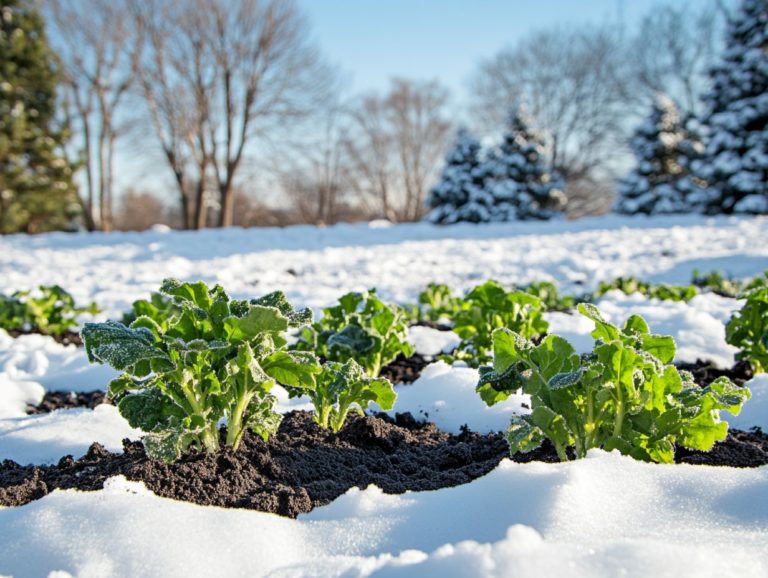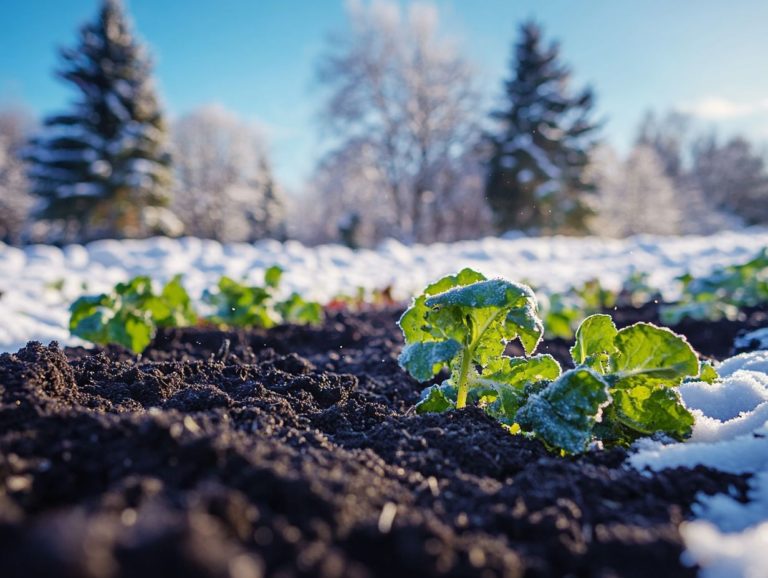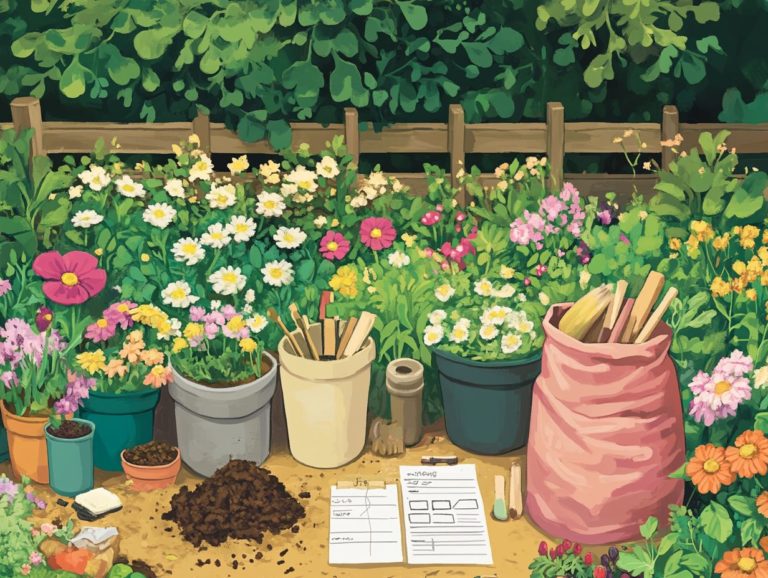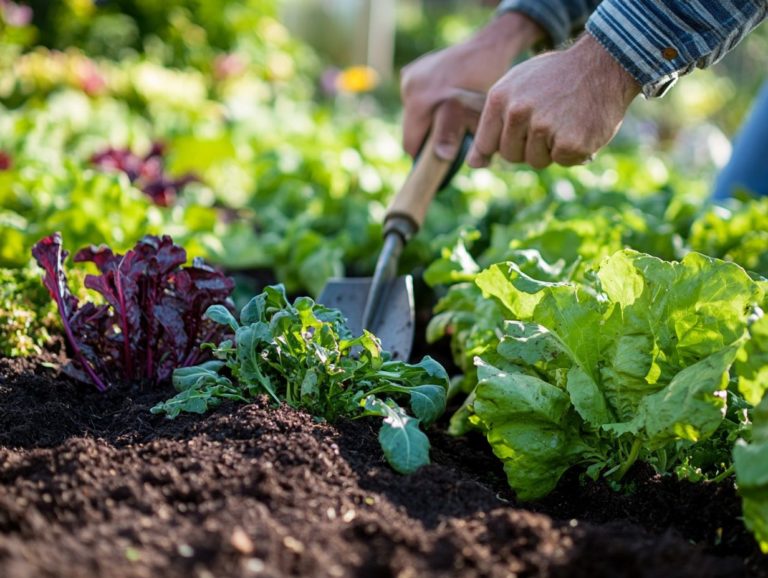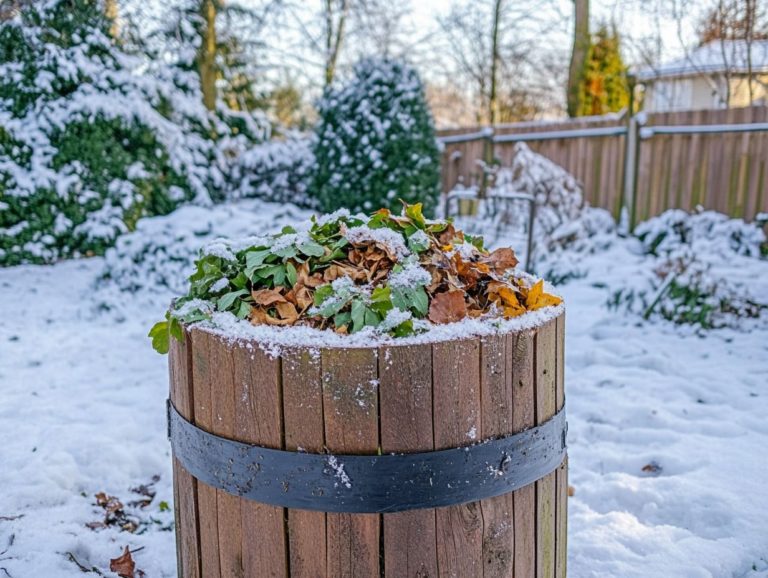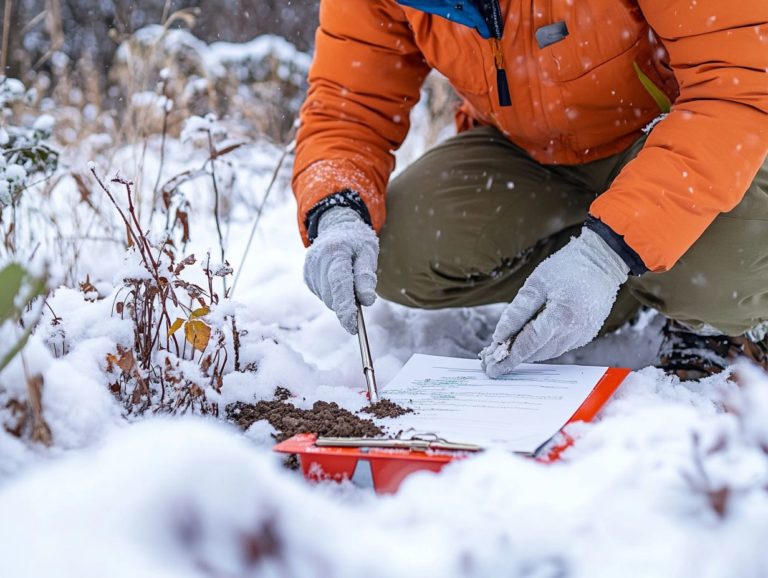How to Build Healthy Soil in Cold Climates
Healthy soil serves as the cornerstone for thriving plants and sustainable ecosystems, particularly in cold climates where distinct challenges emerge during winter.
Grasping the factors that influence soil health such as climate, winter gardening, and prevalent issues is vital for both gardeners and farmers.
Get ready to discover effective strategies for building and maintaining healthy soil! From enriching it with organic matter to incorporating cover crops, composting, and managing weeds, you’ll find essential tips for proper watering, nutrient management, and year-round maintenance.
Don’t miss out on essential tips that will help ensure your soil remains robust and productive, promoting soil health in your garden.
Discover how to cultivate the finest soil possible, even amid the winter chill, by utilizing organic techniques and cover crops!
Contents
- Key Takeaways:
- The Importance of Healthy Soil
- Key Factors That Impact Soil Health in Cold Climates
- Methods for Building Healthy Soil
- Caring for Soil in Cold Climates
- Tips for Maintaining Healthy Soil
- Frequently Asked Questions
- What are the best methods for building healthy soil in cold climates?
- Why is organic matter important for healthy soil in cold climates?
- Can I use compost in cold climates to build healthy soil?
- What are the benefits of using cover crops in cold climates for building healthy soil?
- Is tilling necessary for building healthy soil in cold climates?
- How can I prevent soil compaction in cold climates and maintain healthy soil?
Key Takeaways:
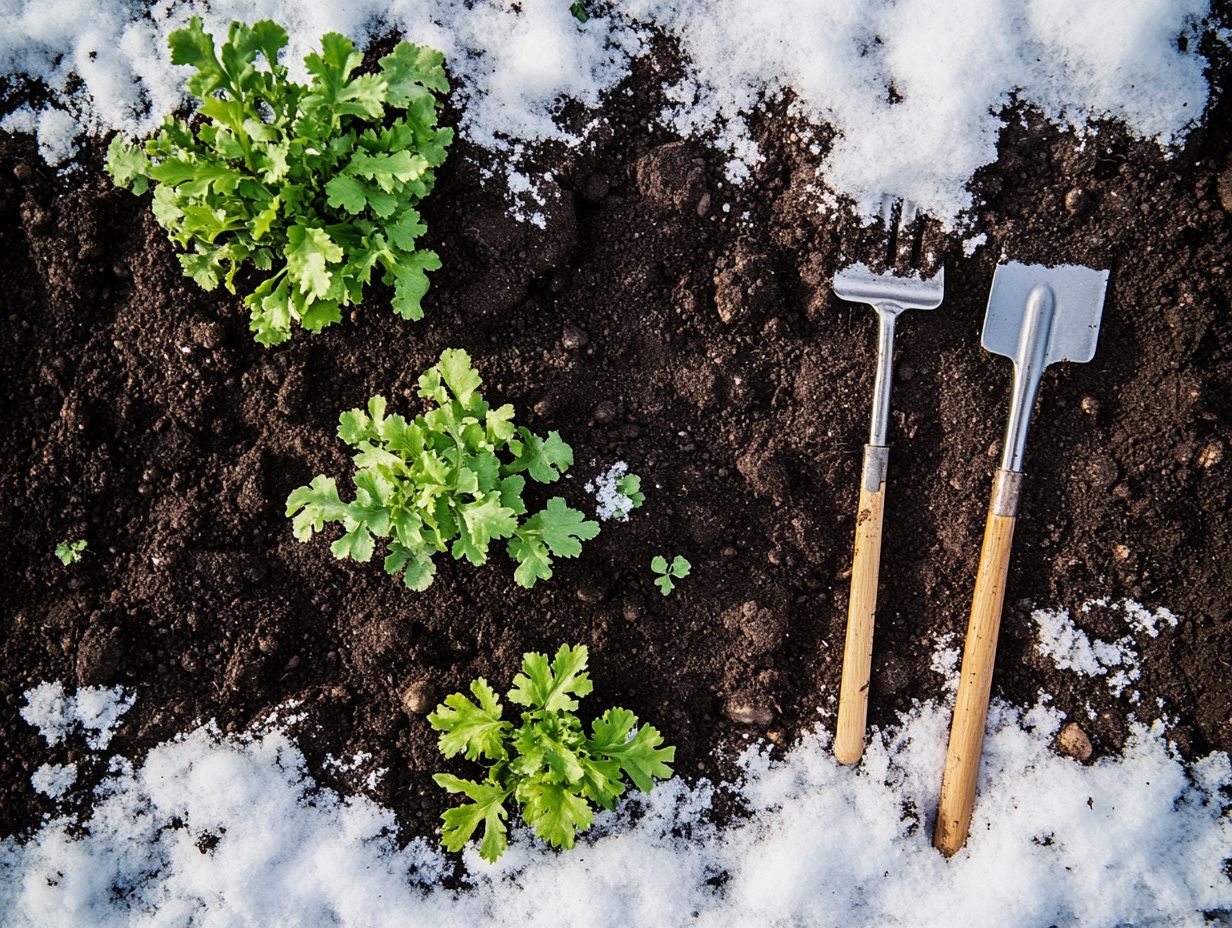
- Healthy soil is essential for plant growth in cold climates due to its ability to retain nutrients and support root development.
- Climate and environmental factors, as well as common soil issues, can greatly affect soil health in cold climates.
- Building and maintaining healthy soil can be achieved through methods like adding organic matter, using cover crops and mulch, and proper watering and nutrient management techniques.
The Importance of Healthy Soil
Healthy soil is essential for sustainable agriculture and organic gardening, acting as the bedrock for vigorous plant growth and the overall health of the ecosystem.
It plays a key role in supporting your crops by supplying essential nutrients, retaining moisture, and caring for various soil organisms such as bacteria, fungi, and earthworms.
Healthy soil also fosters biodiversity and boosts the biological activity needed for nutrient cycling and pest control, enhancing the resilience of the entire ecosystem. By grasping the significance of soil health, you empower yourself to adopt effective practices that protect this invaluable resource.
Why Healthy Soil is Important for Plant Growth
Healthy soil is crucial for your plants’ growth, providing them with vital nutrients, maintaining optimal moisture levels, and supporting the biological activity essential for root development.
Think of soil as a dynamic ecosystem, not just a passive medium. It acts as a reservoir, holding water for your plants during dry spells, ensuring their survival and vitality.
The complex network of organic matter within the soil plays a key role in enhancing its structure and overall health. By nurturing beneficial microorganisms, organic matter improves aeration and drainage, while also boosting the nutrient supply.
This synergy empowers your plants to develop robust root systems, crucial for nutrient uptake and overall resilience, especially in challenging soil types. It s clear that soil health is integral to thriving vegetation.
Key Factors That Impact Soil Health in Cold Climates
Soil health in cold climates is shaped by various factors, such as temperature fluctuations, moisture levels, and the potential for erosion, which can become more pronounced during winter. To improve your garden’s success, consider preparing your soil for spring in cold climates.
Each of these elements plays a crucial role in influencing biological activity and nutrient availability, ultimately affecting the overall vitality of the soil.
Climate and Environmental Factors
Climate and environmental factors are pivotal in determining soil health, as temperature and moisture levels directly influence biological activity and nutrient cycling.
These factors create a thriving habitat for microorganisms and earthworms, essential for breaking down organic matter and enhancing nutrient availability. When temperatures rise, microbial activity often accelerates, leading to rapid decomposition; however, excessive heat can stress these organisms, disrupting their vital functions.
Conversely, fluctuations in precipitation can either saturate or dry out the soil, significantly impacting its texture and structure. By understanding these dynamics, you can adapt your agricultural practices like alternating the types of crops grown in a specific area to improve soil health or refining irrigation management ensuring sustainable farming that aligns with the shifting realities of our climate.
Common Soil Issues in Cold Climates
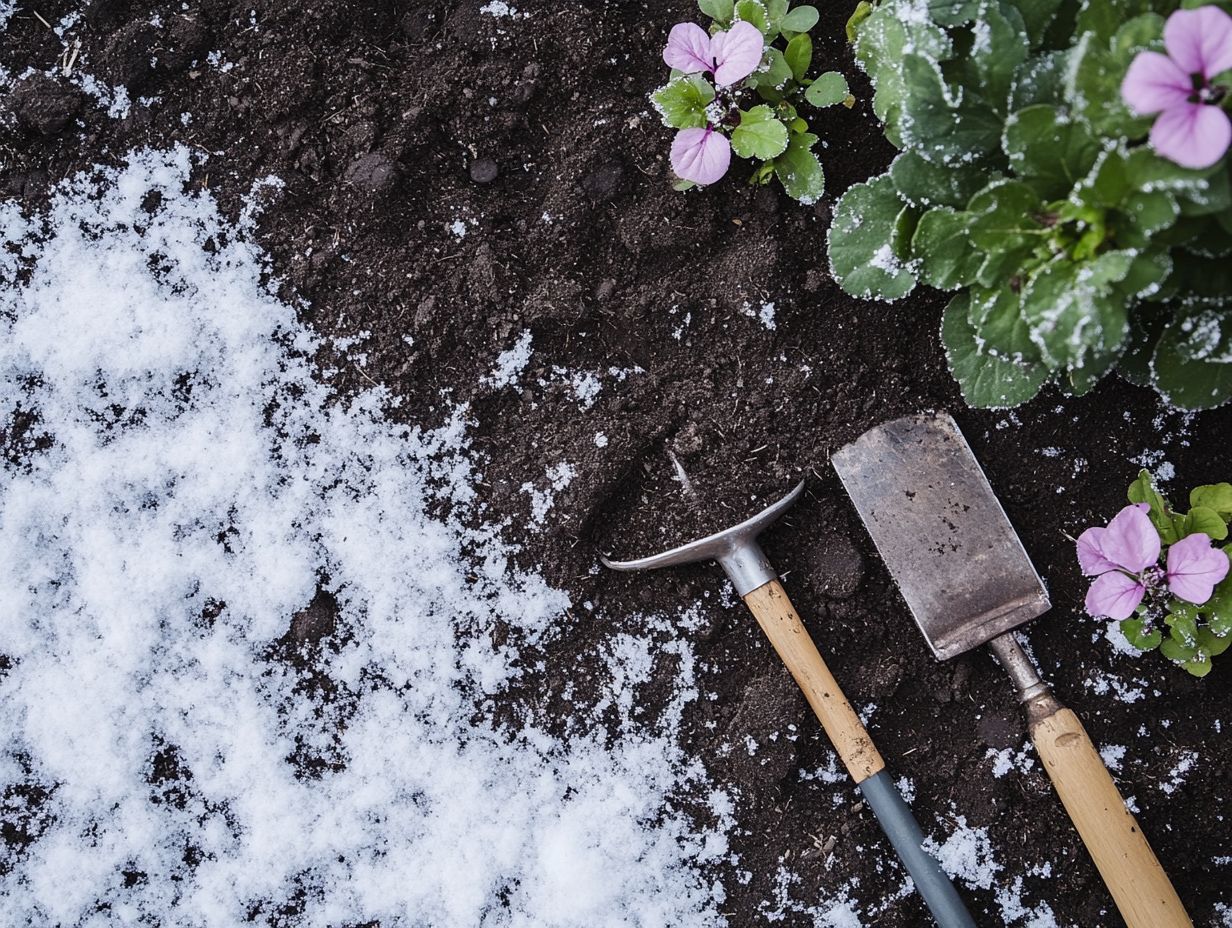
In cold climates, you may face common soil issues such as erosion, poor drainage, and nutrient depletion. Understanding the role of soil in plant health in cold climates can help address these challenges, significantly improving plant growth and overall soil health.
These problems largely arise from freeze-thaw cycles, which disrupt soil structure and worsen erosion, especially on slopes. Limited biological activity in winter can lead to nutrient loss. Therefore, it s crucial for researchers and land managers like you to adopt effective soil conservation techniques.
Try powerful strategies like cover cropping, using legumes, and mulching. These methods can enhance soil structure and promote moisture retention. Incorporating organic amendments like compost can replenish essential nutrients.
By understanding these dynamics, you gain essential tools to sustain agricultural productivity and protect the ecological integrity of challenging environments.
Methods for Building Healthy Soil
To cultivate healthy soil, employ a range of effective methods. Amend your soil with organic matter like compost, utilize cover crops, and enhance ecosystem biodiversity.
Each of these approaches contributes to a robust and thriving soil environment, promoting sustainability and vitality in your gardening efforts.
Amending Soil with Organic Matter
Amending your soil with organic matter, like compost, is essential for enhancing soil structure and increasing nutrient availability.
When you incorporate organic matter, it encourages the growth of beneficial microbes such as bacteria and fungi. These organisms play a crucial role in the process of nutrients moving through the soil and plants. This process enriches your soil and boosts its aeration and water retention capabilities.
Composting is key for maintaining soil vitality. It breaks down organic materials into a nutrient-rich substrate that helps combat erosion and supports a diverse ecosystem of soil organisms, ensuring long-term fertility and resilience.
Using Cover Crops and Mulch
Utilizing cover crops and mulch is a great strategy for protecting your soil from erosion and controlling weeds.
These practices shield your soil from the forces of wind and water, while fostering a thriving ecosystem below. By selecting specific cover crops, you can improve soil structure and fertility. These plants often fix nitrogen, making it readily available for future crops.
Applying mulch helps retain soil moisture during dry spells, reducing your need for frequent irrigation. These sustainable methods cultivate biodiversity within the soil, attracting beneficial organisms that assist in natural pest control and nutrient cycling.
Ultimately, this leads to a more resilient and productive gardening or farming system, ensuring your efforts yield the best possible results.
Caring for Soil in Cold Climates
Caring for soil in cold climates requires a refined approach. Focus on precise techniques for effective watering, meticulous drainage management, and maintaining soil fertility to ensure a balanced supply of nutrients.
Your efforts will ensure that your soil remains robust and productive, even in the harshest conditions.
Proper Watering and Drainage Techniques
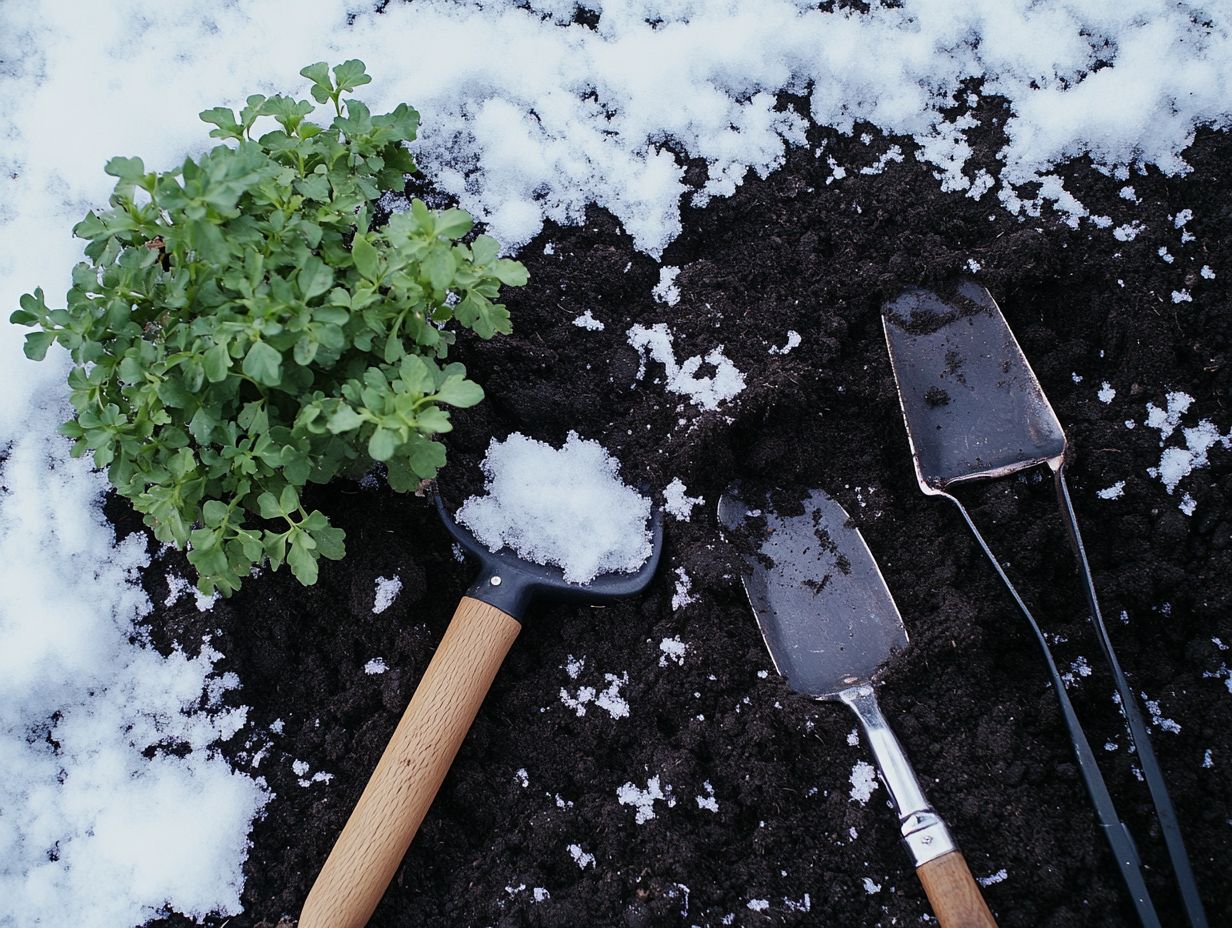
Implementing proper watering and drainage techniques is vital for maintaining optimal soil moisture levels and preventing waterlogging, which can harm soil health.
In regions with cold climates, selecting the right methods becomes even more crucial for gardening success, especially considering soil moisture and nutrient management. Using contour farming and French drains helps manage excess water and retain moisture.
Utilizing raised beds is another strategy that enhances drainage and warms the soil more effectively during early spring. This, in turn, boosts germination rates.
Adding mulch serves as a superb moisture-retentive measure, insulating the soil and minimizing evaporation. By adopting these effective land management practices, you not only safeguard the integrity of your soil but also foster a healthier ecosystem, ensuring that your plants flourish even under challenging weather conditions.
Managing Soil Nutrients and pH Levels
Effective management of soil nutrients, pH levels, and organic practices is essential for cultivating healthy crops and ensuring optimal soil health. By assessing these critical factors, you gain important insights into the fertility of your land, which directly impacts both crop yield and quality.
Using soil tests, such as sampling and laboratory analysis, provides a comprehensive understanding of your soil’s nutrient composition and acidity. By identifying any deficiencies or imbalances, you can implement targeted nutrient management strategies like organic amendments or careful fertilization methods to boost nutrient cycling.
Maintaining the right pH level enhances the availability of essential nutrients and nurtures a thriving ecosystem, ultimately supporting sustainable agricultural practices.
Tips for Maintaining Healthy Soil
Caring for your soil is a year-round adventure! It requires a steadfast commitment to organic gardening practices that nurture soil vitality and resilience.
Year-Round Maintenance Strategies
Implementing year-round maintenance strategies is essential for maintaining soil health and ensuring a flourishing garden across all seasons. By adopting a well-planned approach, you can significantly enhance soil fertility and structure, making it more resilient to the challenges presented by changing weather patterns.
Embrace seasonal practices like mulching in winter to guard against erosion and applying organic compost in spring to elevate nutrient levels in your soil. Additionally, understanding soil microorganisms in cold climates is key to preventing the depletion of specific nutrients, while also promoting a diverse microbiome within the soil.
Utilizing organic inputs, like cover crops or natural fertilizers, nurtures the soil ecosystem, ultimately leading to robust plant growth and higher yields throughout the year.
Frequently Asked Questions
What are the best methods for building healthy soil in cold climates?

Some of the best methods for building healthy soil in cold climates include adding organic matter, using cover crops, and learning how to build a soil profile for cold climates, while avoiding tilling or disturbing the soil too much.
Why is organic matter important for healthy soil in cold climates?
Organic matter helps to retain moisture and nutrients in the soil, which is especially important in cold climates where the soil can dry out quickly. It also provides food for beneficial soil organisms.
Can I use compost in cold climates to build healthy soil?
Yes, compost can be a great addition to building healthy soil in cold climates. It helps to improve soil structure and provides crucial nutrients for plant growth, making it essential for overcoming soil compaction.
What are the benefits of using cover crops in cold climates for building healthy soil?
Cover crops can help to protect the soil from erosion and nutrient loss during the harsh winter months. They also add organic matter and can improve soil structure.
Is tilling necessary for building healthy soil in cold climates?
No, tilling can be harmful to soil health in cold climates. It harms the balance of microorganisms and soil structure, making it vulnerable to erosion and nutrient loss.
How can I prevent soil compaction in cold climates and maintain healthy soil?
Avoid heavy equipment and foot traffic on frozen soil to prevent compaction. Additionally, understanding soil needs for cold-climate plants by adding mulch and organic matter improves soil structure and helps maintain healthy soil.
Healthy soil is essential for thriving plants, especially in cold climates!

